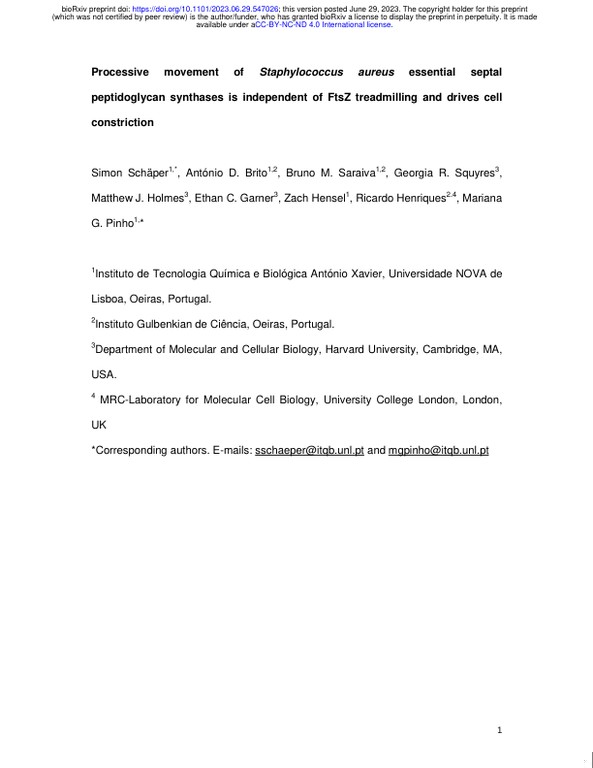Processive movement of Staphylococcus aureus essential septal peptidoglycan synthases is independent of FtsZ treadmilling and drives cell constriction
Technologies: NanoJ ()
Preprint published in bioRxiv, January 2023
Publisher: Cold Spring Harbor Laboratory

The manuscript investigates the relationship between the movement and activity of septum-specific peptidoglycan (PG) synthases and FtsZ treadmilling in Staphylococcus aureus. The study found that FtsW/PBP1 and DivIB, two essential proteins involved in cell division, moved processively around the division site with the same velocity, and their velocities were independent of FtsZ treadmilling. However, inhibition of PG synthesis slowed down or stopped both septum constriction and the directional movement of FtsW/PBP1 and DivIB. The findings support a model for S. aureus in which a single population of processively moving FtsW/PBP1 remains associated with DivIB to drive cell constriction independently of treadmilling FtsZ filaments. The manuscript also discusses previous research suggesting that FtsZ treadmilling is required for division initiation but becomes dispensable for division once PG synthesis machinery arrives, and the rate-limiting role of FtsZ treadmilling for septum constriction in S. aureus was unclear.